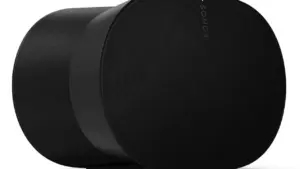
Researchers from the Center for Physical Sciences and Technology (FTMC) in Lithuania have made a significant breakthrough in the field of spectroscopy. Habil. Dr. Gediminas Niaura and Dr. Martynas Talaikis, alongside their international colleagues, have demonstrated for the first time that copper nanoparticles are suitable for use in ultraviolet surface-enhanced Raman spectroscopy (UV SERS). This development opens new avenues for this highly sensitive technique used to analyze molecular vibrations.
The team’s findings indicate that copper can rival more traditionally used metals like silver and gold in UV SERS applications. This is particularly noteworthy because copper is more abundant and less expensive than its counterparts, potentially making UV SERS more accessible for research and industrial applications.
UV SERS is a powerful analytical method that enhances the Raman scattering signal of molecules, allowing for the detection of low concentrations of substances. Traditionally, this technique has been limited to visible light due to the properties of the common metals used. The introduction of copper nanoparticles could revolutionize this field, expanding the range of detectable molecules and improving the sensitivity of measurements.
The research team conducted a series of experiments to test the efficacy of copper nanoparticles in UV SERS. They discovered that these nanoparticles not only enhanced the Raman signal but did so with exceptional efficiency. The findings were published in a peer-reviewed journal, highlighting the potential implications for fields such as biomedical diagnostics and environmental monitoring.
Dr. Niaura emphasized the importance of this discovery, stating, “Copper’s effectiveness in UV SERS could lead to significant advancements in molecular detection and analysis, particularly in areas where cost and accessibility are critical.” The implications of this research extend beyond mere academic interest, as it could facilitate the development of more effective sensing devices and analytical tools.
In addition to their work with copper, the researchers are exploring various methods to further enhance the performance of UV SERS. They aim to optimize the size and shape of the nanoparticles to maximize their effectiveness in different applications. This ongoing research underscores the team’s commitment to pushing the boundaries of what is possible in molecular spectroscopy.
As the scientific community continues to explore the capabilities of copper in this context, the potential for widespread adoption of UV SERS technology becomes increasingly feasible. This advancement could lead to significant improvements in various sectors, including healthcare, where early detection of diseases is paramount.
In summary, the demonstration of copper nanoparticles as viable candidates for UV SERS marks a pivotal moment in spectroscopy research. With further development, this could lead to more efficient and cost-effective analytical techniques that benefit a range of industries and applications globally.






